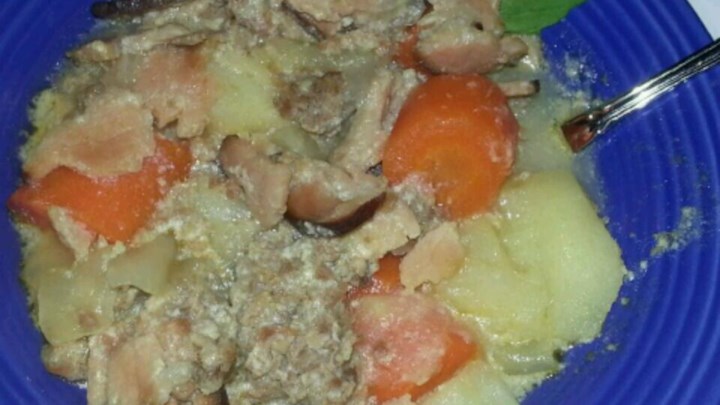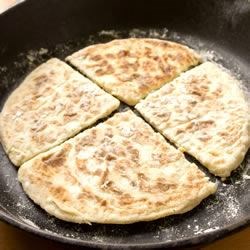Happy St. Patrick's Day! Hopefully you're wearing green, putting away a spoonful of Dublin Coddle or two...and celebrating your Irish connections. (If you're lucky enough to have them.)
Today's recipe is a real mess -- an Eton Mess. Supposedly, it started out as an accident -- the original ingredients were part of a picnic basket that a dog accidentally sat on. Fortunately, the smashed-together ingredients were so delicious that the dog's owners had him regularly sit on picnic baskets from then on. (
I hope not!)
Eton Mess started as a British dish...but the Irish have made it their own. This version comes from Kevin Dundon's
Modern Irish Food. Dundon and his wife founded the Dunbrody Country House Hotel and cookery school -- but you may also know him from his appearances on television and radio.
His version: Kinky Eton Mess. ("Try it with the basil oil -- you won't regret it.")
KINKY ETON MESS
Meringue: 4 egg whites
1 1/4 cups caster (superfine) sugar -- powdered sugar
1/2 tsp cornflour (cornstarch)
1/2 teaspoon white wine vinegar
Lemon Curd: grated rind and juice of 2 lemons
4 large eggs
2/3 cup caster (superfine) sugar
1 stick (1/2 cup) cold butter, cubed
The Rest (combine): 1 3/4 cups raspberries
1 1/2 cups strawberries, halved
juice of 1/2 lemon
1-2 tablespoons Basil Oil (recipe follows - you'll want to make this ahead of time)
Heat oven to 250 degrees (120 degrees C). Line a cookie sheet with nonstick baking paper.
Beat egg whites until stiff, then add sugar, cornstarch and vinegar, a little at a time. Mixture should be glossy. Spread onto covered baking sheet -- bake for 1 hour, until meringue is firm to the touch, but still soft in the middle. ("I normally leave mine to cool in the oven with the door propped ajar.")
While meringue is cooling, mix all the lemon curd ingredients (except butter) in a double boiler over simmering water. Keep whisking until mixture thickens, then slowly add pieces of butter -- cook 10-12 min. until curd thickens. Set aside.
To serve: Lightly break the meringue into uneven pieces, then layer with berry mixture and lemon curd in a clear glass bowl or four glasses. Serve and enjoy.
* * * * * *
BASIL OIL
1 pound basil
10 1/2 oz. flat leaf parsley
1 cup grapeseed oil
Plunge the herbs in boiling water for about a minute, then transfer them to a bowl of iced water for 3 min. -- this helps them keep their color and flavor. Dry lightly on paper toweling.
Put herbs in a bowl, then gradually drizzle in oil. (Use a handheld blender -- or do this, bit by bit, in a regular blender.) Once all the oil is added, let rest for 20 min. (thus "infusing" it). Push through a strainer or cheesecloth; resulting oil can be stored in refrigerator for up to two weeks.
* * * * * * * *
No time to fuss? Try a simpler version of this mess-y dish, inspired by the Irish Mess.
COLORADO MESS
1 pound strawberries, stemmed, cut in half, and lightly smashed
5-6 crumbled meringue, shortbread or macaroon cookies
whipped cream
Layer all three ingredients in four tall-stemmed clear glasses -- top with a fluff of whipped cream and chocolate sprinkles, if you want to be fancy-pants. Serve and enjoy.










